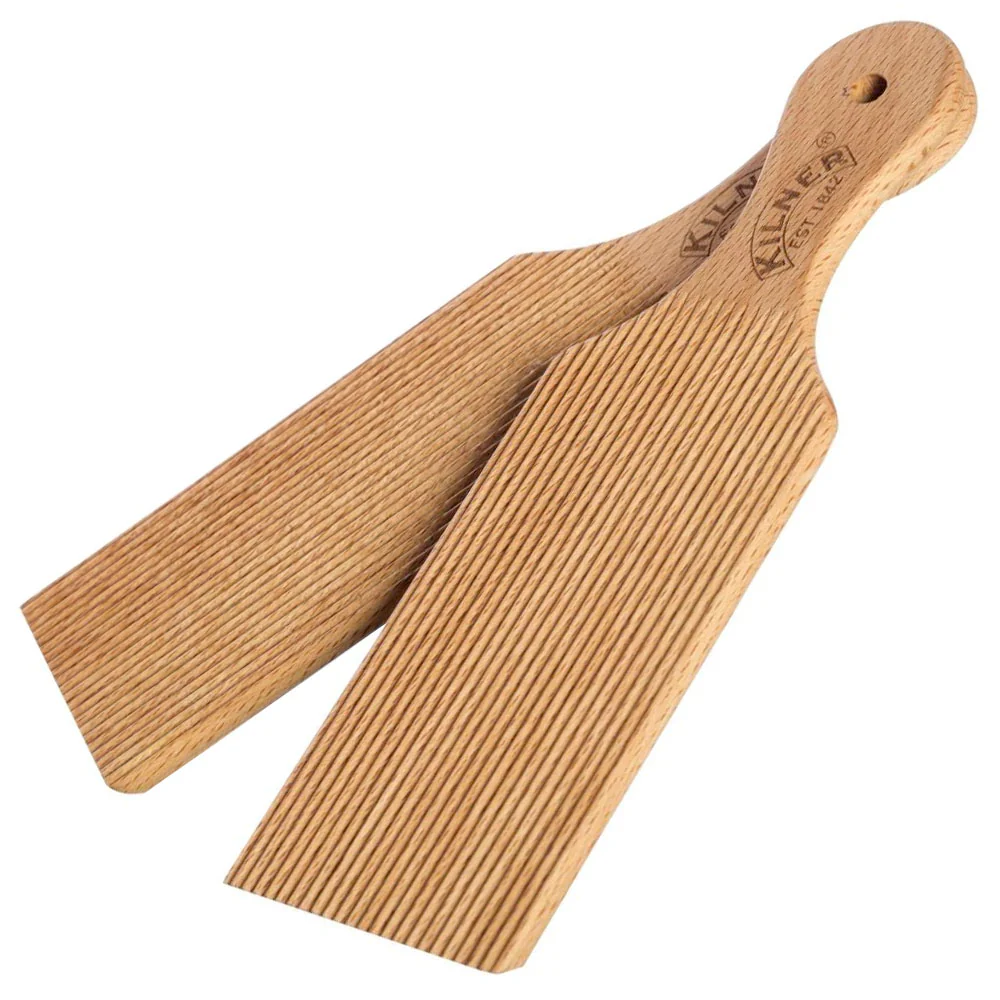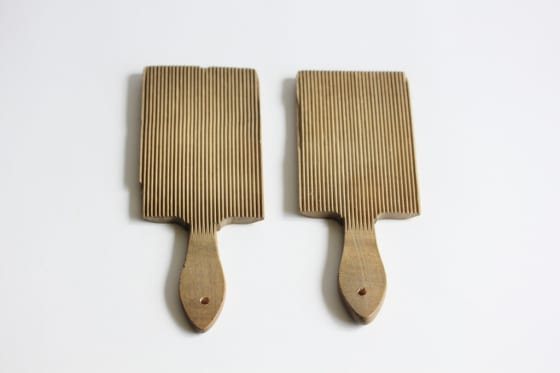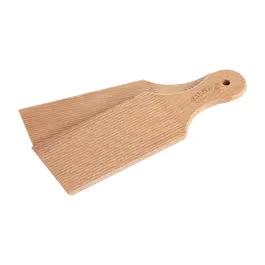Butter paddles—ever heard of them? If not, don’t worry. Unless you’ve spent time in an old-fashioned kitchen or on a traditional dairy farm, these wooden tools might look like relics from a forgotten era. However, for those with some age and experience, butter paddles were once essential tools in the art of butter-making.
Long before supermarkets stocked neatly packaged butter, making fresh butter at home was a common practice. These simple yet effective tools played a crucial role in shaping, draining, and handling butter without melting it. Let’s take a deep dive into the history, function, and enduring charm of butter paddles.

What Are Butter Paddles?
Butter paddles, also known as butter hands or butter beaters, are flat wooden paddles with grooved surfaces. They typically come in pairs and were traditionally used in the butter-making process to shape, press, and remove excess buttermilk from freshly churned butter.
Made from hardwood like beech or maple, these paddles were designed to prevent heat transfer from hands, ensuring the butter remained firm and manageable. Their ridges helped squeeze out excess moisture, improving the texture and preserving the butter for longer periods.

A Look Back: The History of Butter Paddles
Before the convenience of store-bought butter, families and dairy farms produced their own butter using a butter churn. Once the cream was churned into butter, it needed to be shaped, drained, and prepared for storage—this is where butter paddles came in.
- Early 19th Century: Home butter-making was a common practice, especially in rural households. People used wooden churns and paddles to process fresh butter.
- Late 19th to Early 20th Century: As dairy production became more commercialized, butter paddles were widely used in small dairy operations to prepare butter for sale.
- Mid-20th Century Onward: With the rise of factory-produced butter, home butter-making declined, and butter paddles became less common in everyday kitchens. However, they remain popular among artisanal butter makers and historical reenactors.
How Were Butter Paddles Used?
If you’ve never used butter paddles before, the process is fascinating. After churning, fresh butter was still soft and contained excess buttermilk, which could lead to spoilage if not properly removed. The paddles were used to:
- Drain the Butter – By gently pressing the butter between the grooved paddles, people could squeeze out excess buttermilk. This step was crucial for improving the butter’s texture and longevity.
- Shape the Butter – The paddles helped mold the butter into blocks, rolls, or decorative patterns before storage or serving.
- Salt and Flavor the Butter – Some variations of butter paddles had smoother sides, allowing for easy mixing of salt or herbs into the butter.
- Prevent Hands from Warming the Butter – Since butter is sensitive to temperature, handling it with hands could cause it to melt. The wooden paddles prevented this issue.

Why Butter Paddles Were So Important
Before refrigeration and factory processing, homemade butter had a shorter shelf life. Removing excess buttermilk was vital to preventing spoilage, and butter paddles made the process efficient.
- Enhanced Preservation – Butter that retained too much moisture could develop a sour taste or go rancid. The paddles helped extend freshness.
- Uniform Appearance – Instead of uneven lumps, butter paddles ensured a smooth, well-formed final product, which was especially important for farmers selling butter at markets.
- Traditional Craftsmanship – Making butter with paddles wasn’t just functional—it was an art form passed down through generations.
Why Did Butter Paddles Disappear?
With the arrival of mass-produced butter, the need for home churning diminished. By the mid-20th century, few households still made butter from scratch, and the tools that once played a key role in everyday life became vintage collectibles.
- Factory Processing Took Over – Butter production moved from homes and small dairies to large-scale manufacturers. Machines replaced hand tools like paddles.
- Refrigeration Reduced Spoilage – Modern storage methods made it less necessary to press every drop of moisture out of butter.
- Supermarkets Made Butter Affordable – Instead of spending hours churning and shaping butter, people could simply buy it at the store.
Today, butter paddles are rarely seen in modern kitchens—but they remain treasured by artisanal butter makers, history enthusiasts, and collectors of vintage kitchen tools.

Where Can You Still Find Butter Paddles Today?
Even though they’re no longer common, butter paddles haven’t disappeared entirely. If you’re interested in owning a pair, you can find them in:
- Antique Shops & Flea Markets – Many old-fashioned kitchen tools end up in vintage stores.
- Online Marketplaces – Websites like eBay and Etsy often have listings for both antique and modern replicas.
- Farm & Homesteading Stores – Some traditional butter-making tools are still sold for those who enjoy homemade dairy products.
Are Butter Paddles Still Used?
Yes! While they’re rare in everyday kitchens, butter paddles remain essential in artisanal butter production. Many small-batch dairy farms and home cooks who prefer traditional methods still use them to achieve perfectly textured butter.
Additionally, butter paddles are popular among living history groups and reenactors, who aim to preserve the skills and techniques of the past.
Final Thoughts: A Forgotten Kitchen Tool with a Lasting Legacy
Butter paddles may seem like a mystery to younger generations, but for those with some age and experience, they are a cherished memory of a simpler time. These wooden tools played an essential role in home butter-making, ensuring quality, freshness, and tradition.
Though they have largely disappeared from modern kitchens, their historical significance and practical use remain undeniable. Whether you’re an antique collector, an artisan butter enthusiast, or simply someone who appreciates the past, butter paddles serve as a reminder of the craftsmanship and self-sufficiency of earlier generations.
So, if you ever come across a pair in an antique store or your grandmother’s kitchen, take a moment to appreciate their history. They might just inspire you to bring back the lost art of homemade butter!